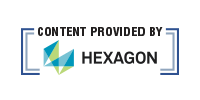
It’s no secret that costs are rising. We feel it at the grocery store and the gas station, among many other places. But project-driven organizations are feeling it too… in an exponentially larger way. With material costs ballooning and labor shortages still in full swing, there seems to be no end in sight for this cost escalation.
These financial woes are mentioned in an article by the New York Times titled “California’s Ambitious High-Speed Rail at a Crossroads,” authored by Jill Cowan. The article centers around the construction project aiming to build a high-speed rail system that will connect Los Angeles to San Francisco. The article backs the validity of the project, saying:
“The passage of Biden’s $1 trillion infrastructure package, astronomical gas prices and California’s insistence that the state lead the nation in addressing climate change make the moment seem perfect for providing oxygen to the [project].”
Although it might be a project right for the time, concern regarding the gargantuan cost of the project has lulled progress. Even worse, mounting delays, along with political will and waning enthusiasm, have caused the project budget to further increase.
So, if inflation isn’t going anywhere, how should project leaders proceed? If the California High-Speed Railway project proves anything, it is that delays and paused progress inevitably leads to higher and higher costs.
At Hexagon, we believe reaching economic sustainability is contingent on an organization’s ability to mitigate cost pressures within their control using the four steps listed below:
1. Choose the Right Projects
Choosing the projects that best fit your business goals is essential to maximizing your returns. To do this, look back at past project performance data and identify the projects that,
- Had a higher rate of return
- Benefited stakeholders
- Improved efficiencies
- And required resources that were within reach.
Odds are, those projects helped support enterprise-wide objectives. Going forward, seek out projects that have those same characteristics and directly support your stated goals. By doing so, you’ll be more likely to experience the same project success over and over again.
2. Prevent Waste
The best way to save on cost is to optimize resource usage. You want to provide your projects with the human, monetary, and equipment resources they need at the right time. You also want to ensure those resources are in constant use. For example, if a bulldozer is needed on two separate job sites, you want to ensure that if it is not in use at one, that it will be used at another. Idle resources negatively affect your bottom line, so do your best to ensure their constant use.
3. Create Contingency Plans & Budgets
Risks turn into reality which causes costs to rise and project schedules to run over. One of the best ways to mitigate this is to establish contingency plans and budgets. In short, contingencies are pools of funds set aside within the project plan that can be used if the project experiences the hopefully-but-not-always-avoided risks that have been accounted for. Since resources are already factored into the project plan, the project is less likely to experience delays and even more added cost in scrambling to develop an action plan.
4. Turn to Automation to Enhance Employee Productivity
The quiet killer of productivity in a project-driven business is wasting employee talent on low-value, administrative tasks. Today’s industry-leaders put their vast amount of project data to work through automation. This allows them to harvest performance data and siphon it into easily consumable dashboards. Using these dashboards, your employees can focus on managing projects and implementing positive changes within your planning, execution and control processes. These automated project dashboards can also be viewed by leadership, allowing for fewer progress update meetings. With less time spent on manual processes, your employees can reallocate their time to even more high-value tasks — like improved forecasting, earlier insights, and root cause analysis — leading to faster responsiveness, better decision making and ultimately better project outcomes.
Maximize Project Success with an EPP Solution
The factors that caused California’s high-speed rail system’s cost overages cannot all be remediated by these steps. However, taking these four steps allows an organization to look inward – to the factors within their control and take action to enhance their own project success. By doing so, the problems that might otherwise burst budgets are addressed preemptively.
Taking these steps to maximize your project returns is easiest with an Enterprise Project Performance (EPP) solution. An EPP solution provides you with a panoramic view of your project data across every portfolio in your organization. This minimizes the blind spots that previously prevented your projects from reaching their full potential. With greater visibility:
Your team will easily spot and mitigate resource waste.
Leadership will gain reliable past project data to inform their decision-making processes regarding project selection and contingency implementation.
Your organization can experience an employee productivity recapture rate of up to 50% (as found in a Hexagon commissioned study by Forrester Consulting).
Ready to learn more about how an EPP solution can benefit your organization? Click here.

